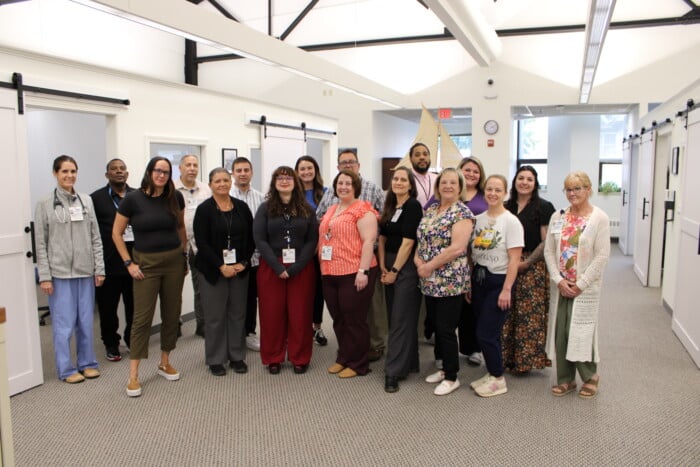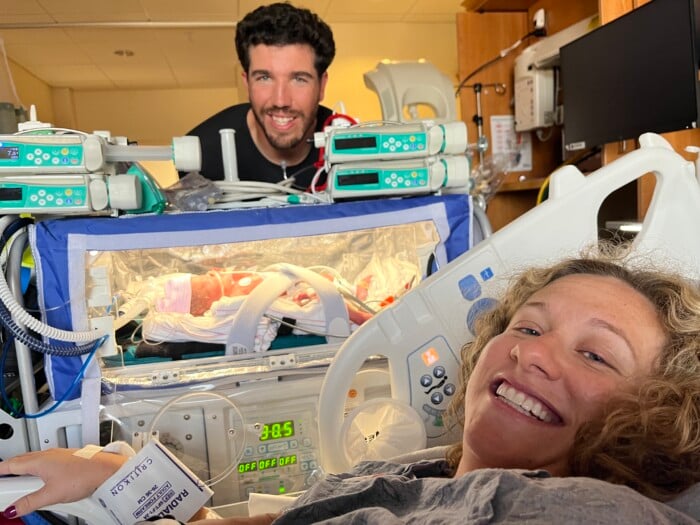Midlife Career Crisis: Navigating Your Layoff
Tips and tricks to help you protect your well-being after an unexpected later-in-life layoff

At age 49, Elena, a former director of sales and marketing in the staffing industry, was unemployed after 30 months of job searching. Although she had more than doubled her company’s sales and was one of its highest-paid employees, she was unexpectedly laid off.
For individuals who lose their jobs in their 40s or 50s, job loss can take a bite out of their finances — and self-worth — at a time when they need to project positivity and confidence. It’s no surprise that research shows that long-term unemployment is associated with increased rates of anxiety and depression.
“You go through cycles like mourning. You go through stages. First, you’re shocked, then you’re angry, and then you act,” Elena told New Hampshire author Kelly Clark in Clark’s latest book, “Getting Back to Work: How to Piece Your Well-being Back Together When Unemployment Strikes at Midlife.”
“Getting Back to Work” explores Elena’s journey and the experiences of 14 other New Hampshire workers who found themselves jobless for more than six months after age 40. Published earlier this year, “Getting Back to Work” was borne from Clark’s previous doctoral research, which looked at why some people facing unemployment at midlife were better able to manage their well-being than others. She says her interest in coping with adversity after job loss evolved out of her three decades of working as a nonprofit executive.
“I was really interested in people at the mid-career point, because what we see is that, regardless of where the economy is at — high or low unemployment — the duration of unemployment for people age 55-plus is longer,” Clark says. “They’re out of work longer at a time when they’re saving for retirement or have kids in college, and they don’t really have time to make it up.”
The unemployment rate in New Hampshire still hovers below 3%. Still, a recent analysis by ProPublica and the Urban Institute of the Health and Retirement Study reveals that 1 in 10 workers laid off in their 50s will never again earn as much as they once did. In September 2024, AARP reported that 33% of job seekers ages 55+ were long-term unemployed, compared to just 23% of job seekers ages 16 to 54.
Developing The Well-Being Framework
In 2011, Clark sent out The General Health Questionnaires, a screening tool that measures mental health, to 270 people. She then interviewed those who reported feeling positive and developed an analysis to determine what precisely led to their optimistic attitudes. Was it genetic positivity or something else? After meeting with them, she noticed that individuals in this cohort consistently reported participating in one or more activities, which included:
• Maintaining a structured schedule
• Engaging in meaningful activities
• Conserving resources
• Accessing social support
• Building mental strength
Clark refers to these activities as the “Well-Being Framework,” a practical suite of strategies respondents used to buffer the negative impacts of their unemployment. This framework is not just a theoretical concept, but represents actionable steps that can be applied in real life.
“Consistently, regardless of their circumstances, they were taking some action in each area and in combination,” Clark says. “While my dissertation was very academic, in the book I wanted to make (the research) more accessible to people in a way that they can grab onto whatever works for them and apply it. Without your well-being, it’s really difficult to be able to conduct a job search or fulfill any of the other demands with fewer resources and all of the challenges with being long-term unemployed.”
Where Are They Now?
Clark interviewed Elena and others for her dissertation more than a decade ago and then followed up to see how they fared in the job market and in their general well-being. Out of five people Clark was able to reconnect with in 2020, most had found work, including one who experienced a short bout of homelessness.
Elena ultimately reached a job search “dead-end” in New Hampshire. She moved to North Carolina, taking a job as a blackjack dealer at a casino before becoming its marketing and events director. Unsatisfied with life in North Carolina after six years, Elena and her husband looked for opportunities that would allow them to return to the Granite State — with jobs.
Elena took a role as a branch administrator at an investment company in North Carolina that had plans to open a branch in Lebanon, New Hampshire. Within months, she was able to transfer to the Lebanon branch. Today, she works as an executive assistant and contracts manager for a large Upper Valley hospital and hopes to continue to grow in her role. Elena’s story is just one of many in the book that demonstrate the resilience and determination of midlife job seekers.
“I just heard from her after I sent her a copy of the book, and she told me that she’s finally come full-circle, but it’s taken all of this time,” Clark says.
Like many others who’ve experienced long-term unemployment, Elena continues to pay a financial toll despite her perseverance.
“She said she’s not going to be retiring as soon as she anticipated and that she’s got to make up for having to drain down some of her retirement funds,” Clark says.
Yet, by following the Well-Being Framework, Elena was able to remain positive after experiencing months of rejection. She made it a rule to stick to a schedule, avoid turning on the TV, and made sure to take breaks. She maintained social connections through her book club and received support from her husband and family. She updated her computer skills and earned a project management certificate to make herself more marketable. All of these actions gave Elena the mental strength to secure the job and lifestyle she wanted.
Others in the book protected their well-being by volunteering, exercising and taking part-time jobs. These activities gave them purpose and perspective on their situations, Clark says.
Getting Back to Business: Useful Strategies for Job Seekers
“Getting Back to Work” includes practical strategies people can use to stay focused and positive while they search for new jobs and adjust to their new normal. The book includes planners, suggested reading and actions people can take that follow the Well-Being Framework. Some of these include:
• Determine the hours you’ll focus on your job search daily and commit to this schedule.
• Seek out low or no-cost job employment counseling at your local job center, such as NH Works.
• Identify needs vs. wants and adjust your budget.
• Work part-time.
• Volunteer.
• Reassess your living arrangements.
• Take on a low-cost household project that’s been on your list for years.
• Avoid negative people.
• Make a list of three new people to connect with each week.
• Record your daily progress, however incremental.
• Learn your way forward.
Clark encourages those facing unemployment to reach out to loved ones and close friends and their local NH Works job office. NH Works provides comprehensive resources for job seekers, from training and apprenticeships to education and career information. With 12 offices across the state, NH Works gives job seekers access to computers, phones and knowledgeable staff committed to helping them find career solutions.
The absolute worst thing a frustrated job seeker can do for their job search — and mental health — is nothing at all, Clark says.
“You can seize control of your situation by putting into place the five strategies to piece your well-being back together and support your mental and physical health,” she says in the closing of her book. “There are people who will help you. Be proactive and reach out. Don’t sit idle.”













